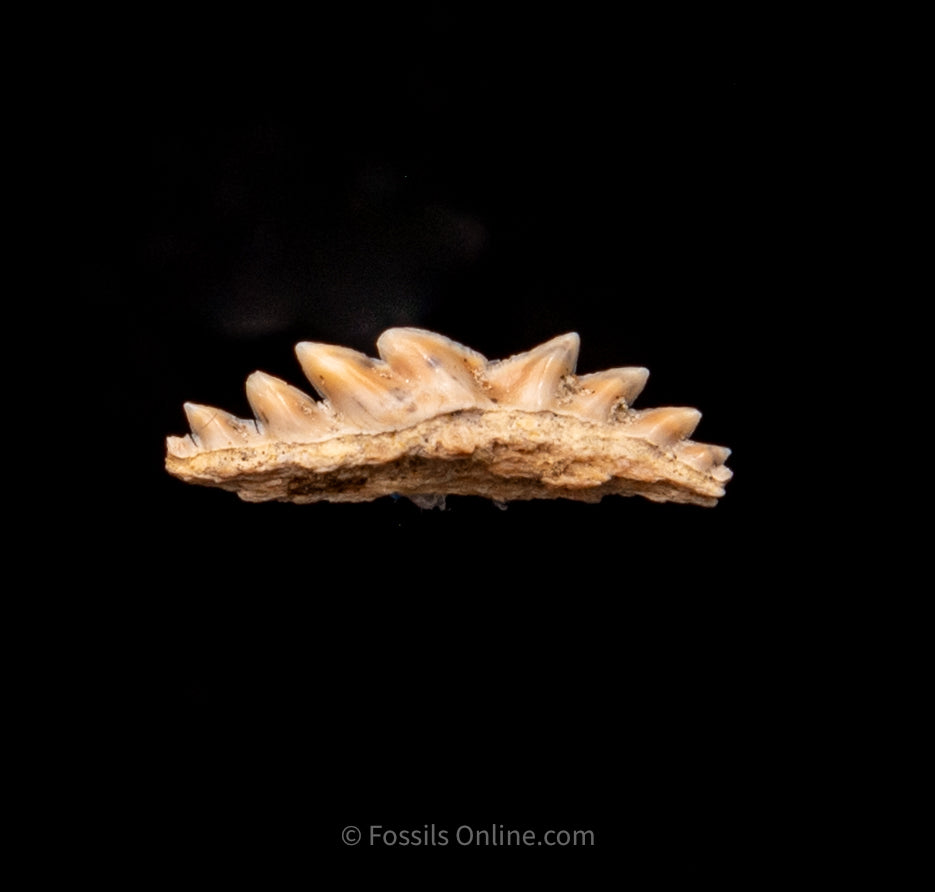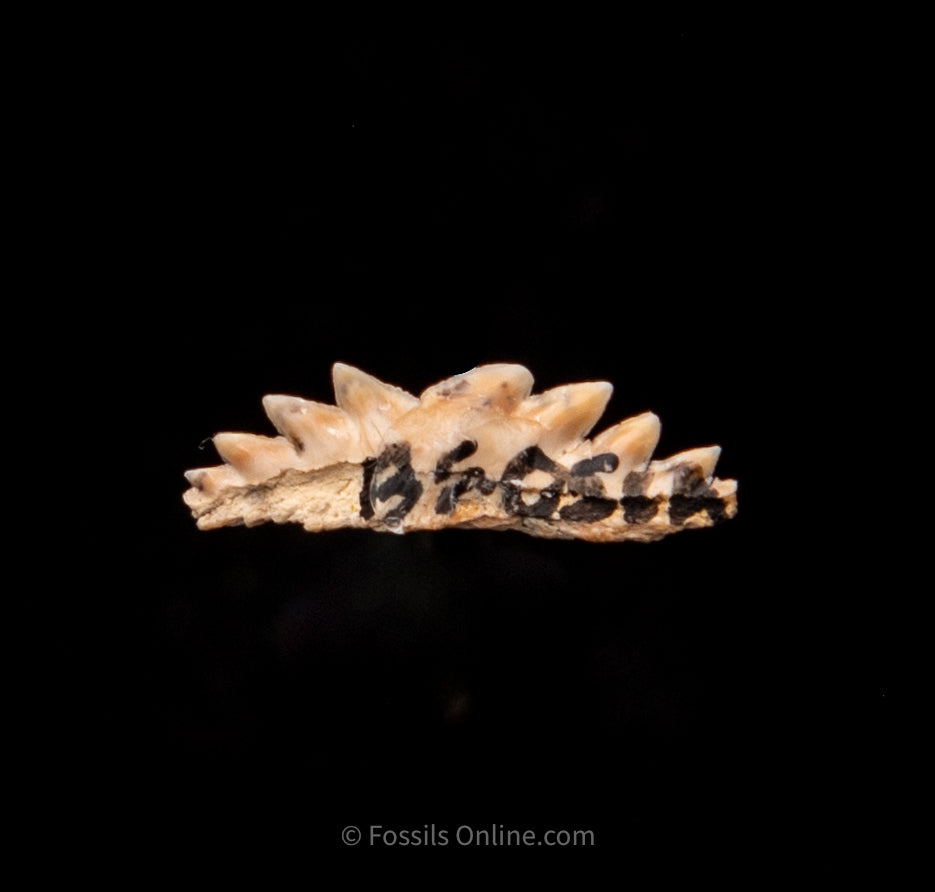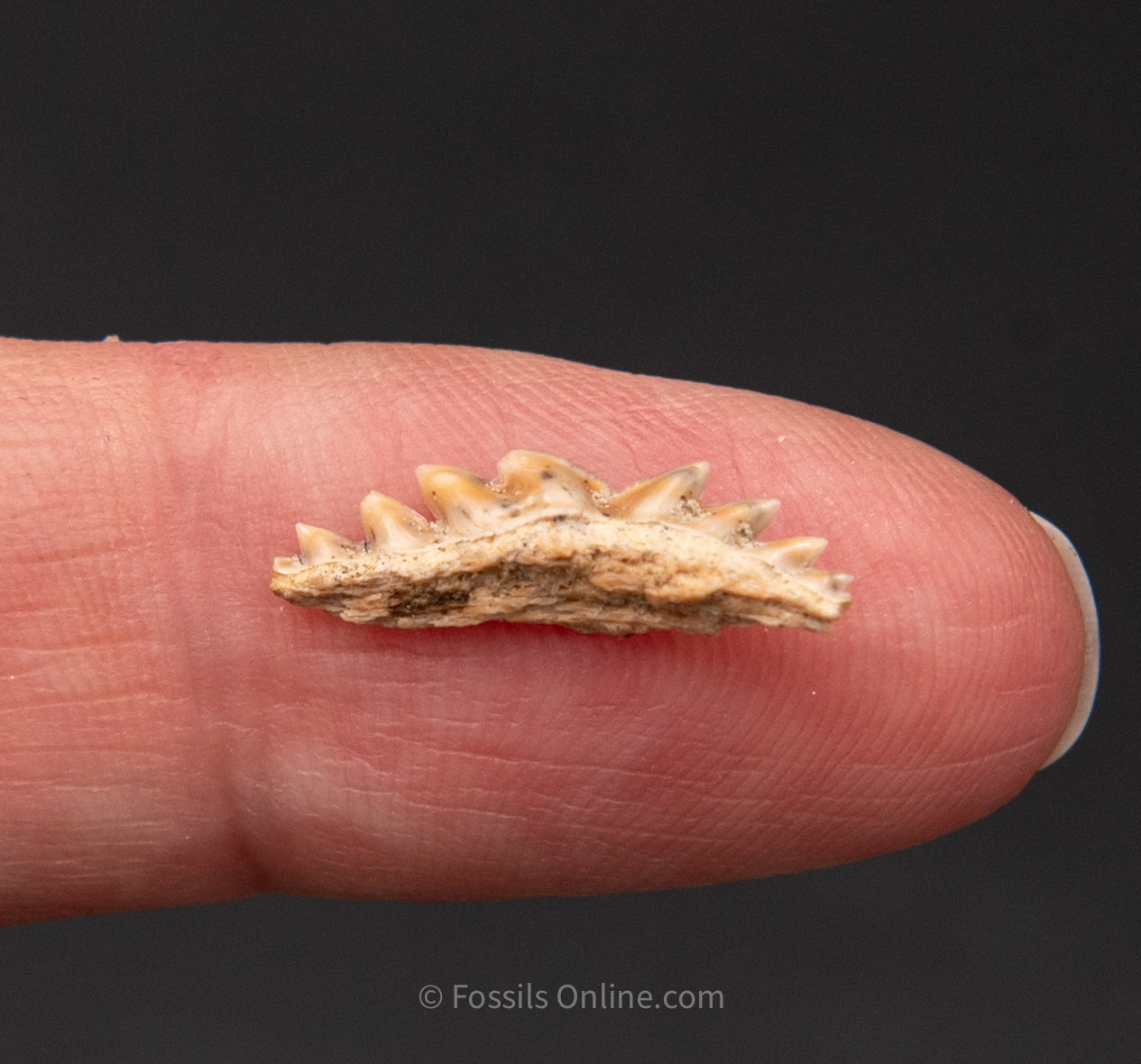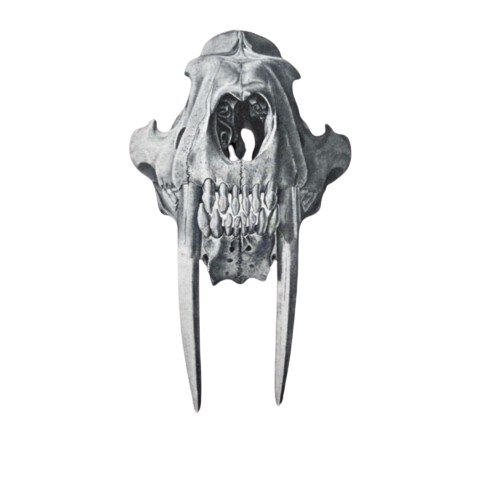


Hexanchus Andersonii Symphyseal Ex Bob Ernst Collection
This symphyseal tooth from a Cow shark is a rare treasure, found in Sharktooth Hill, CA. It was previously owned by Bob Ernst, adding to its unique value.
Hexanchus andersonii, also known as Anderson’s sixgill , is an extinct species of sixgill that lived during the Middle Miocene epoch. Characterized by its six gill slits, unlike the more common five-gilled sharks, this species is known from fossil teeth, which are serrated and relatively broad. These fossils provide valuable insights into the diversity and evolution of prehistoric sharks during the Miocene period.
A symphyseal tooth refers to a tooth located at the midline of the jaw, specifically in the symphysis region where the two halves of the jawbone meet. These teeth are often found in the front part of the mouth and can be seen in various animals, including fish, reptiles, and mammals. In sharks, symphyseal teeth are typically smaller and more symmetrical compared to the other teeth in the jaw. They play a crucial role in grasping and processing food, contributing to the overall efficiency of the animal’s feeding mechanism.
Species
Hexanchus andersonii
AGE
late Cretaceous
LOCATION
Bakersfield, CA
FORMATION
Temblor Formation -- Round Mountain Silt Member
Size
.69"W
Choose options



